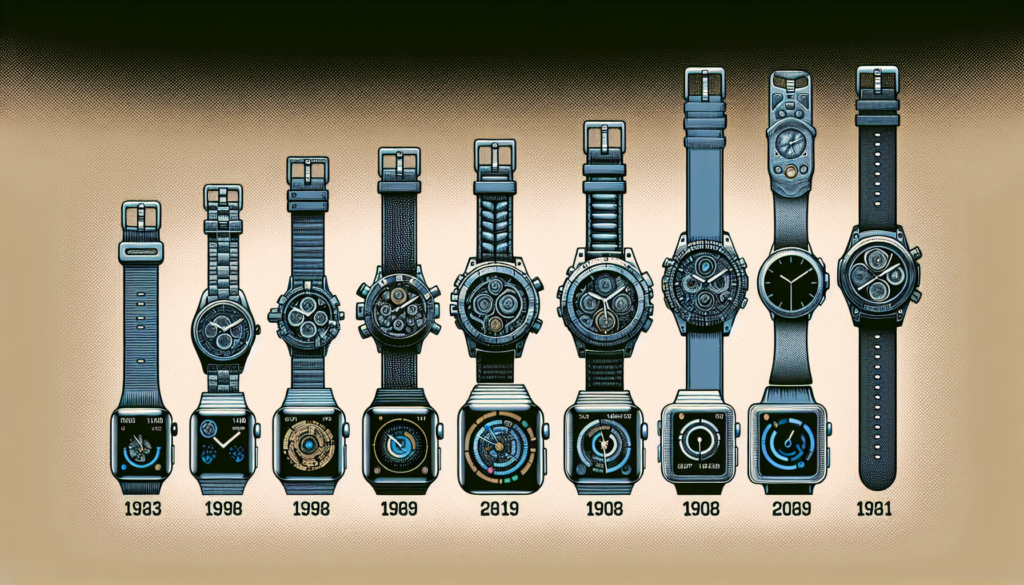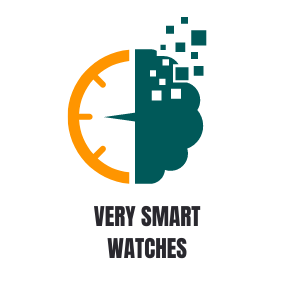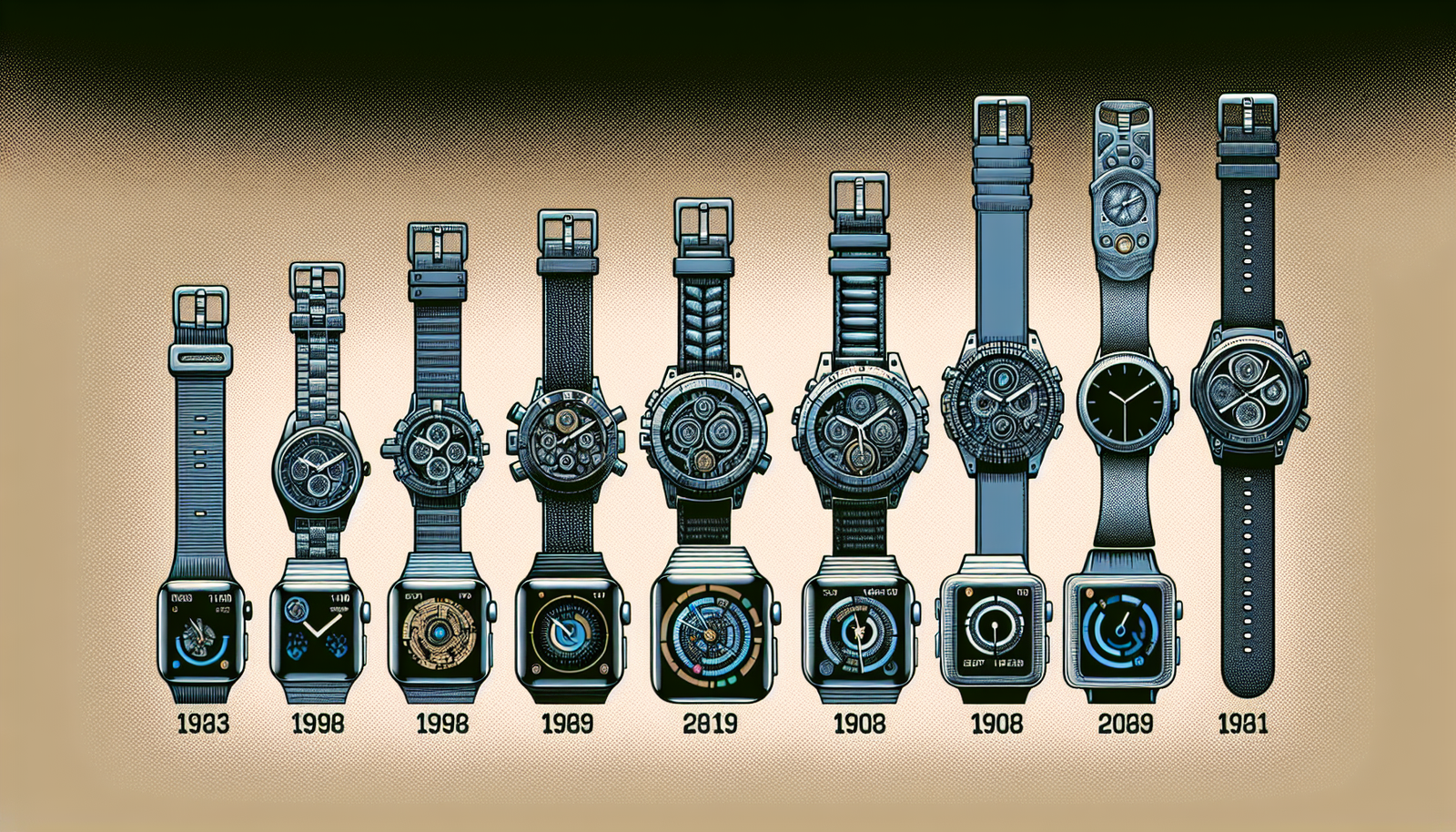The history of smart watches is a captivating journey that showcases the fusion of technology and fashion. Starting as simple wrist-worn computers, these devices have undergone a remarkable transformation over the years. Initially popular for basic tasks like calculations and game playing, smartwatches have now integrated features like touchscreens, fitness tracking, and smartphone connectivity. This evolution reflects not only the advancements in technology but also the changing expectations and lifestyles of consumers. The history of smartwatches is a fascinating mirror to the dynamic changes in our digital world.
Early Conceptualization of Smartwatches
First Concept of Wrist-Worn Computers
The concept of wrist-worn computers, which later paved the way for smartwatches, can be traced back to the late 20th century. Visionaries and inventors started exploring the idea of a portable computing device that could be worn on the wrist, freeing users from the constraints of carrying bulky computers. These early conceptualizations laid the foundation for the development of smartwatches as we know them today.
Emergence of Calculator Watches
In the 1970s and 1980s, calculator watches emerged as the first commercially available wrist-worn computing devices. These watches were equipped with basic calculators, allowing users to perform calculations on their wrists. While they were limited in functionality, calculator watches sparked interest in the potential of wrist-worn computers and set the stage for future advancements in technology.
Early Game Playing Watches
During the same period, watchmakers also introduced early game playing watches. These watches featured simple games like Tetris and Space Invaders, providing entertainment on the go. Although the games were basic, they marked a significant step towards the integration of interactive features into wrist-worn devices and hinted at the possibilities of future smartwatches.
Limited Functions and Connectivity
Despite the early development of wrist-worn computers, these devices were still limited in terms of functions and connectivity. Most early models lacked the ability to connect to other devices or networks, severely restricting their capabilities. However, these early limitations laid the groundwork for future innovations, highlighting the need for improved connectivity and expanded functionality in smartwatches.
The Rise of Digital Watches
Pioneering Digital Watches
In the 1980s, digital watches emerged as a significant shift from traditional analog timepieces. These watches replaced the mechanical hands with digital displays, allowing for more accurate timekeeping. While they were not initially considered smartwatches, their digital nature paved the way for future advancements in wearable technology.
Integration of Basic Functions
As digital watches gained popularity, manufacturers started incorporating basic functions beyond timekeeping. Features such as alarms, chronographs, and timers were added, enhancing the practicality and versatility of these devices. While they were still a far cry from modern smartwatches, this integration of basic functions marked a crucial milestone in the evolution of wearable technology.
Early Fitness Tracking Features
In the late 1980s and early 1990s, digital watches started incorporating fitness tracking features. These early pioneers introduced basic step counters and pedometers, allowing users to monitor their physical activity. While rudimentary compared to the advanced fitness tracking capabilities of modern smartwatches, these early features planted the seed for the future integration of health and wellness monitoring into wearable devices.
The Birth of the Modern Smartwatch
First Smartwatch Concepts
The concept of a modern smartwatch began to take shape in the early 2000s when companies started envisioning wearable devices with advanced functionalities. In 2001, IBM introduced the WatchPad, a prototype smartwatch that featured a touchscreen interface, email capabilities, and wireless connectivity. This marked the beginning of a new era in the development of smartwatches.
Introduction of Touchscreen
The introduction of touchscreens revolutionized the smartwatch industry and allowed for more intuitive user interactions. Touchscreens provided a more seamless and interactive experience, making it easier to navigate through menus, access apps, and respond to notifications. This development significantly enhanced the usability and functionality of smartwatches, positioning them as valuable companions for daily activities.

Incorporation of Sensors and Apps
With technological advancements, smartwatches began to incorporate various sensors, such as heart rate monitors, accelerometers, and GPS, to track health metrics and provide location-based services. Additionally, the introduction of apps expanded the capabilities of smartwatches, allowing users to customize their devices and access a wide range of functionalities.
Integration with Smartphones
One of the most significant milestones in the evolution of smartwatches was their integration with smartphones. This integration allowed smartwatches to act as extensions of smartphones, providing users with the convenience of accessing essential information and performing tasks directly from their wrists. With the ability to receive calls, reply to messages, and control smartphone functions, smartwatches became truly indispensable gadgets in the digital age.
Smartwatches as Fashion Statements
Collaboration with Fashion Brands
As smartwatches gained popularity, tech companies recognized the importance of merging technology with fashion. Collaborations with renowned fashion brands brought style and elegance to smartwatches, transforming them into fashionable accessories. Brands like Fossil, TAG Heuer, and Michael Kors partnered with tech companies to create smartwatches that seamlessly blended fashion-forward designs with cutting-edge technology.
Design and Customization Options
To cater to diverse consumer preferences, smartwatch manufacturers started offering a wide range of design and customization options. Users could now choose from various watch faces, straps, and materials to personalize their devices, allowing smartwatches to match their individual styles and personalities. This focus on design and customization transformed smartwatches from mere gadgets into fashion statements.
Inclusion of Luxury Materials
To further enhance their appeal as fashion accessories, luxury smartwatches began to incorporate premium materials such as stainless steel, ceramic, and sapphire glass. These high-end materials not only added to the aesthetics of the smartwatches but also ensured durability and longevity. With the inclusion of luxury materials, smartwatches became coveted pieces for both tech enthusiasts and fashion-forward individuals.
Mainstream Popularity and Increased Functionality
Expansion of App Ecosystem
As smartwatches gained mainstream acceptance, the app ecosystem flourished, offering a myriad of applications tailored for the devices. Users could now access productivity apps, social media, news updates, and even games directly from their wrists. This expansion of the app ecosystem transformed smartwatches into versatile tools capable of streamlining various aspects of daily life.
Advanced Fitness Tracking Features
With an increasing emphasis on health and wellness, smartwatches stepped up their game in terms of fitness tracking capabilities. Advanced sensors and algorithms were incorporated, allowing for more accurate and comprehensive monitoring of activities, heart rate, sleep patterns, and other vital metrics. Fitness enthusiasts and health-conscious individuals found smartwatches to be invaluable companions in achieving their wellness goals.
Wireless Connectivity Enhancements
Smartwatches continued to evolve in terms of connectivity, making it more convenient for users to stay connected on the go. Improved wireless technologies like Bluetooth and Wi-Fi enabled seamless synchronization with smartphones, granting users quick access to notifications, calls, and messages. With enhanced connectivity, smartwatches became indispensable devices for managing both personal and professional lives.
Battery Life Improvements
One of the challenges initially faced by smartwatches was limited battery life. However, manufacturers recognized the importance of extended battery performance and made significant improvements in this area. Through optimizing hardware and software efficiency, implementing low-power display technologies, and introducing advanced battery management techniques, smartwatches achieved longer battery life, enhancing their usability and convenience.
Major Players and Market Competition

Introduction of Apple Watch
In 2015, Apple made a groundbreaking entry into the smartwatch market with the introduction of the Apple Watch. With its sleek design, advanced features, and seamless integration with the Apple ecosystem, the Apple Watch quickly gained popularity and set new standards for smartwatches. It became a dominant player and a driving force behind the rapid growth of the smartwatch market.
Competing Brands and Operating Systems
Following Apple’s lead, various companies, including Samsung, Garmin, Fitbit, and Huawei, joined the smartwatch market, introducing their own devices with unique features and functionalities. Each brand brought its own operating system, such as Samsung’s Tizen, Google’s Wear OS, and Fitbit’s Fitbit OS, creating healthy competition and providing consumers with a wide range of choices.
Market Share and Sales Statistics
The smartwatch market has experienced significant growth over the years, fueled by consumer demand for wearable technology. According to market research firm IDC, global smartwatch shipments reached a record high of 72.6 million units in 2020, showcasing the increasing popularity and adoption of smartwatches worldwide. Apple continued to dominate the market, capturing a significant share of the sales, followed by Samsung and other leading brands.
Smartwatches in Health and Medical Fields
Health Monitoring Capabilities
Smartwatches have become valuable tools for health monitoring, providing users with the ability to track vital signs and detect potential health issues. Advanced sensors, such as optical heart rate monitors and ECG sensors, enable continuous monitoring of heart rate, blood oxygen levels, and even abnormal heart rhythms. These features empower individuals to take proactive measures for better health and enable healthcare providers to gather valuable data for diagnostics and treatment.
Integration with Healthcare Systems
As smartwatches gained credibility in the health and medical fields, integration with existing healthcare systems became a key focus. Partnerships between smartwatch manufacturers and healthcare providers allowed for seamless data sharing, remote patient monitoring, and real-time health insights. This integration bridged the gap between consumer wearables and professional healthcare, facilitating better care delivery and enhancing patient experiences.
Potential for Disease Detection
Smartwatches, with their advanced sensors and algorithms, hold immense potential in the early detection and management of various diseases and conditions. Researchers and healthcare professionals are exploring the use of smartwatches for detecting indicators of conditions like diabetes, sleep apnea, atrial fibrillation, and even COVID-19. Leveraging the continuous monitoring capabilities of smartwatches, these devices could play a vital role in proactive disease prevention and management.
Future Trends and Innovations
Foldable Displays and Flexible Designs
As technology progresses, smartwatches may incorporate innovative display technologies, such as foldable displays and flexible designs. These advancements would allow for larger screens without sacrificing portability, offering users a more immersive experience and making it easier to interact with the devices. Foldable displays and flexible designs could mark the next major leap in smartwatch technology, transforming the way we perceive and use these devices.
Enhanced AI and Voice Control
Artificial intelligence (AI) and voice control are expected to play a more prominent role in the future of smartwatches. Advanced AI algorithms would enable smarter and more personalized user experiences, adapting to individual preferences and providing proactive suggestions and recommendations. Voice control will allow for more intuitive and hands-free interactions with smartwatches, making tasks even more convenient and effortless.
Integration with IoT Devices
The Internet of Things (IoT) is a rapidly growing ecosystem of connected devices, and smartwatches are likely to play a central role in this interconnected world. Smartwatches can act as control hubs for IoT devices, allowing users to manage and monitor their smart homes, appliances, and other connected gadgets from their wrists. This integration will further enhance the convenience and efficiency of smartwatches as a hub for multiple devices and technologies.
Augmented Reality Features
Augmented reality (AR) is another emerging trend that could find its way into smartwatches. By leveraging AR capabilities, smartwatches could overlay digital information and virtual objects directly onto the real world, expanding their functionality beyond the confines of the watch face. From providing real-time navigation guidance to immersive gaming experiences, AR-enabled smartwatches could unlock a whole new realm of possibilities for users.
Challenges and Limitations of Smartwatches
Battery Life Constraints
Battery life remains a challenge for smartwatches, as their compact size limits the capacity of the batteries they can accommodate. With increasing functionalities and power-hungry features, it becomes a balancing act for manufacturers to optimize battery life without compromising the user experience. Although significant improvements have been made, overcoming battery life constraints remains an ongoing challenge for the industry.
Screen Size and User Interface Challenges
The small screen size of smartwatches poses challenges in terms of user interface design and usability. Balancing the display of relevant information with ease of navigation and interaction requires careful consideration. Designing intuitive user interfaces that can be easily accessed on a small screen without compromising functionality is a constant challenge for smartwatch developers.
Privacy and Data Security Concerns
As smartwatches collect and transmit sensitive health and personal data, ensuring privacy and data security becomes paramount. Manufacturers must implement robust security measures to protect user data from unauthorized access and breaches. Additionally, clear privacy policies and transparent data handling practices are vital to maintaining consumer trust in smartwatch technology.
Conclusion
The history of smartwatches is a testament to the incredible evolution of technology and fashion. From the first conceptualization of wrist-worn computers to the birth of the modern smartwatch, these devices have come a long way. Smartwatches have transformed from simple calculators and game playing devices to comprehensive health and lifestyle companions. With collaborations with fashion brands, increasing functionality, and integration with other technologies, smartwatches have become indispensable tools for the modern individual. As technology continues to advance and consumer expectations evolve, smartwatches will undoubtedly continue to shape our digital world, adapting to our needs and reflecting the ongoing march of technological advancements.

